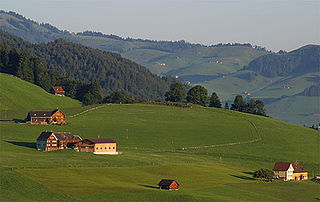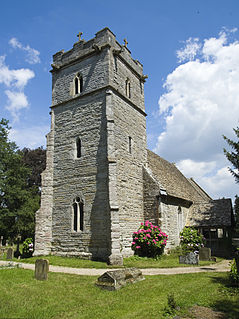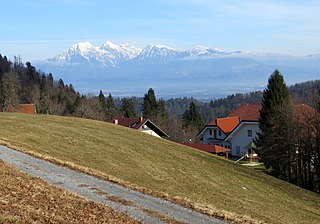| Sv. Jernej nad Muto Branik nad Muto (1955–1993) | |
|---|---|
| Coordinates: 46°38′58.25″N15°8′9.67″E / 46.6495139°N 15.1360194°E Coordinates: 46°38′58.25″N15°8′9.67″E / 46.6495139°N 15.1360194°E | |
| Country | |
| Traditional region | Styria |
| Statistical region | Carinthia |
| Municipality | Muta |
| Area | |
| • Total | 7.11 km2 (2.75 sq mi) |
| Elevation | 816.7 m (2,679.5 ft) |
| Population (2002) | |
| • Total | 120 |
| [1] | |
Sv. Jernej nad Muto (pronounced [ˈsʋeːti jɛɾˈneːi̯ nad ˈmuːtɔ] ) is a dispersed settlement in the hills north of Muta in the historical Styria region in northern Slovenia, right on the border with Austria. [2] It also includes the former village of Bistriški Jarek, which was incorporated into the settlement in 1953. [3]

A dispersed settlement, also known as a scattered settlement, is one of the main types of settlement patterns used by landscape historians to classify rural settlements found in England and other parts of the world. Typically, there are a number of separate farmsteads scattered throughout the area. A dispersed settlement contrasts with a nucleated village.

Slovenia, officially the Republic of Slovenia, is a sovereign state located in southern Central Europe at a crossroads of important European cultural and trade routes. It is bordered by Italy to the west, Austria to the north, Hungary to the northeast, Croatia to the southeast, and the Adriatic Sea to the southwest. It covers 20,273 square kilometers (7,827 sq mi) and has a population of 2.07 million. One of the successor states of the former Yugoslavia, Slovenia is a parliamentary republic and a member of the United Nations, of the European Union, and of NATO. The capital and largest city is Ljubljana.

Austria, officially the Republic of Austria, is a country of nearly 9 million people in Central Europe. It is bordered by the Czech Republic and Germany to the north, Hungary and Slovakia to the east, Slovenia and Italy to the south, and Switzerland and Liechtenstein to the west. The territory of Austria covers 83,879 km2 (32,386 sq mi). The terrain is highly mountainous, lying within the Alps; only 32% of the country is below 500 m (1,640 ft), and its highest point is 3,798 m (12,461 ft). The majority of the population speaks local Bavarian dialects as their native language, and German in its standard form is the country's official language. Other local official languages are Hungarian, Burgenland Croatian, and Slovene.














